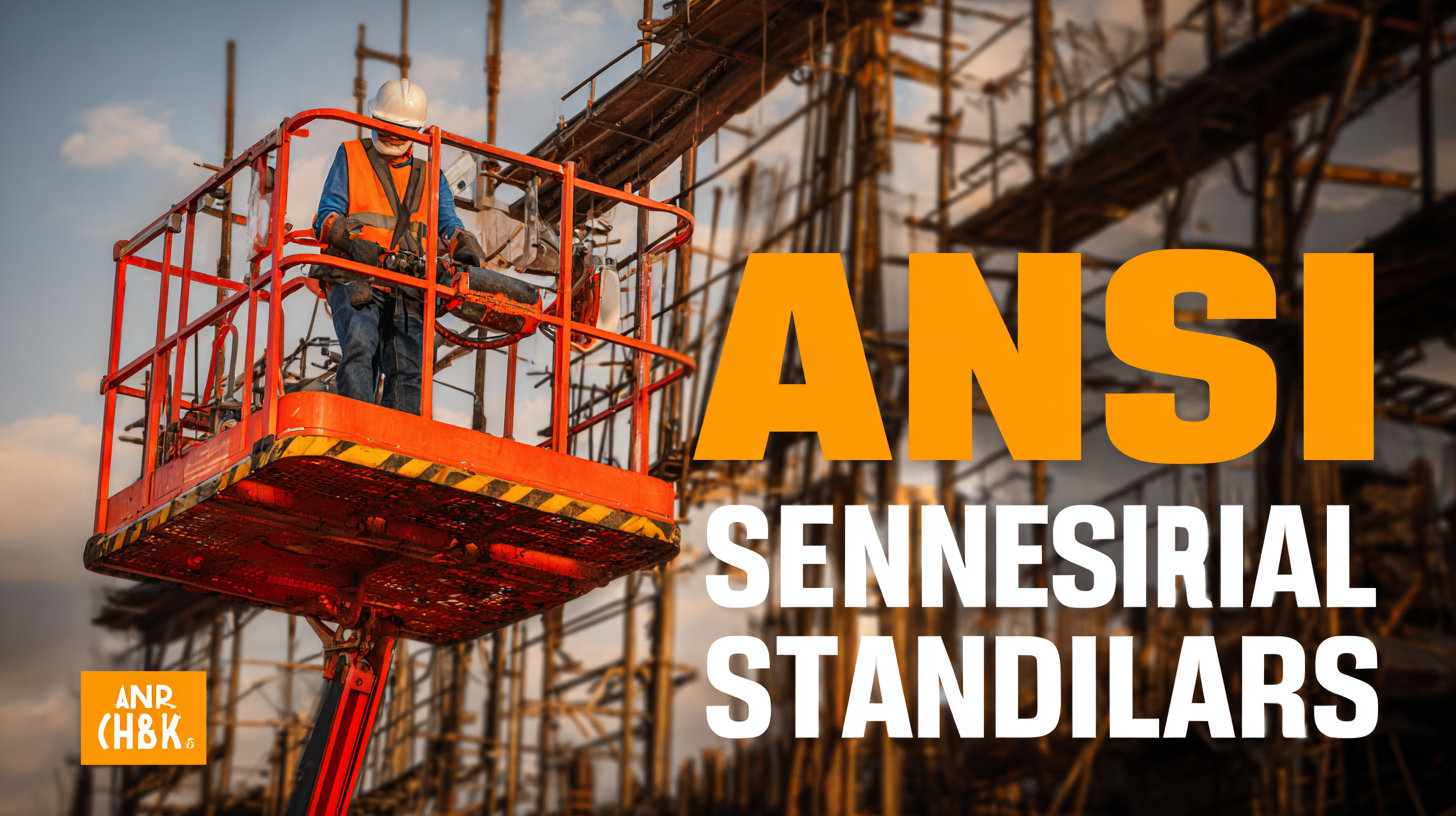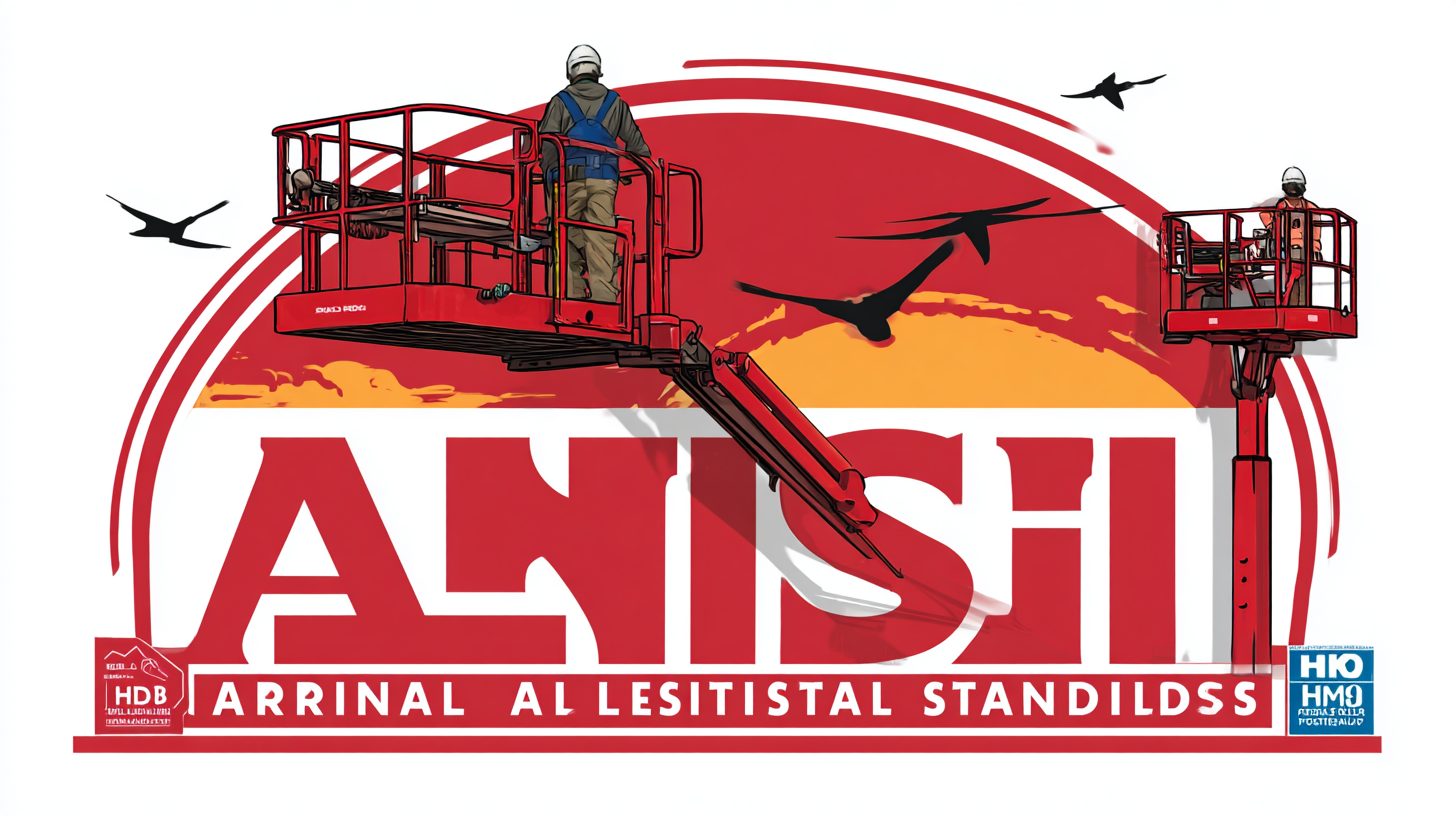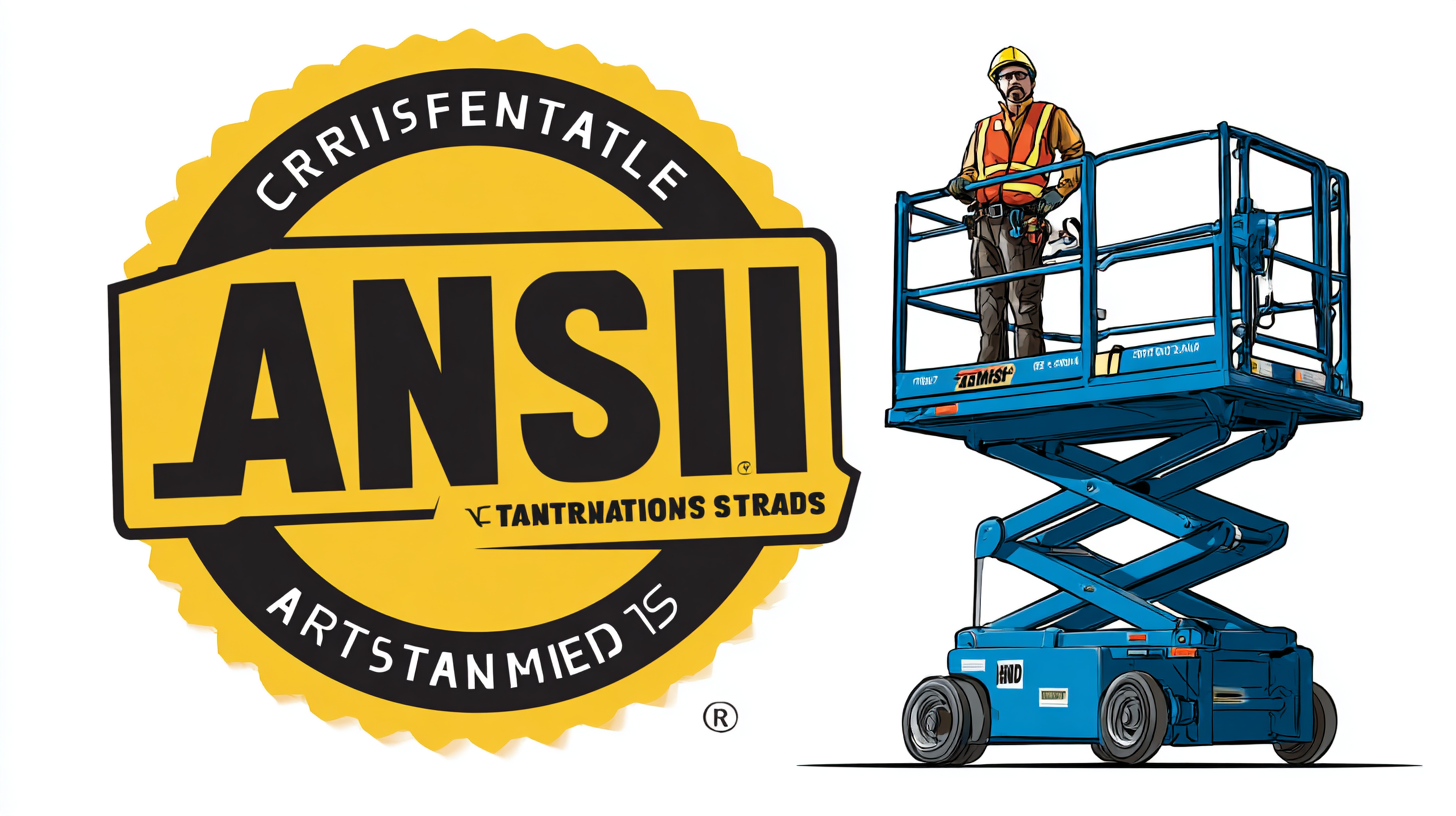7 Essential Tips for Understanding Best Ansi Aerial Lift Standards
The safety and efficiency of aerial lift operations are paramount in various industries, as highlighted by the ANSI Aerial Lift Standards. According to the U.S. Bureau of Labor Statistics, falls from aerial lifts account for a significant percentage of workplace injuries, underscoring the vital importance of compliance with these standards. The American National Standards Institute (ANSI) establishes guidelines that ensure operators are well-trained, equipment is properly maintained, and safety protocols are strictly followed.

By adhering to ANSI Aerial Lift Standards, businesses can enhance workplace safety, reduce accident rates, and improve overall operational performance. This blog will explore seven essential tips for understanding and implementing these standards to safeguard employees and optimize aerial lift usage across diverse sectors.
Key ANSI Aerial Lift Standards You Need to Know
When it comes to operating aerial lifts, understanding the key ANSI (American National Standards Institute) standards is crucial for ensuring safety and compliance. These standards not only dictate the design and performance requirements of aerial lifts but also outline the safety protocols operators must follow. Familiarizing yourself with these guidelines can help reduce workplace accidents and increase overall productivity.
One of the most critical ANSI standards is ANSI A92, which covers the performance and safety requirements for aerial platforms. This standard categorizes various types of aerial lifts, such as boom lifts and scissor lifts, into specific classifications, ensuring that operators are using the correct equipment for their tasks. Additionally, ANSI A92 stipulates operator training requirements, emphasizing the importance of proper training and certification. Understanding these distinctions is vital for selecting the right equipment and preventing mishandling.
In addition to A92, operators should be aware of ANSI A10.44, which focuses on safety requirements for the installation and use of aerial lifts in construction sites. This standard highlights protective measures against potential hazards, including overhead obstructions and electrical risks. By keeping these key ANSI standards in mind, operators can foster a safer work environment while ensuring compliance with regulations.
Understanding the Importance of Aerial Lift Safety Regulations
When it comes to aerial lift operations, understanding safety regulations is paramount for protecting workers and ensuring a compliant work environment. Aerial lifts, whether used in construction, maintenance, or warehousing, can pose significant risks if not operated correctly. Safety regulations, such as those set forth by ANSI (American National Standards Institute), establish rigorous standards for the design, inspection, and use of aerial lifts. This not only helps to mitigate the risk of accidents but also ensures that equipment meets safety requirements.
Following these standards is crucial not just for the well-being of employees, but also for employers aiming to minimize liability and enhance operational efficiency. Regular training on updated regulations empowers operators with the knowledge needed to recognize potential hazards and operate equipment safely. Additionally, adherence to ANSI standards helps employers demonstrate their commitment to a safe workplace, which can improve employee morale and productivity. Implementing these safety measures is an investment in both human resources and overall operational success, making understanding aerial lift safety regulations vital for any organization.
7 Essential Tips for Understanding Best Ansi Aerial Lift Standards
| Tip | Description | Importance |
|---|---|---|
| 1. Familiarize with ANSI Standards | Understand the American National Standards Institute's (ANSI) guidelines for aerial lifts. | Ensures compliance and enhances safety protocols. |
| 2. Regular Training | Hold periodic training sessions for operators. | Maintains high safety standards and operational skills. |
| 3. Conduct Daily Inspections | Inspect lifts for any visible damage or malfunction. | Prevents accidents and ensures equipment reliability. |
| 4. Use Personal Protective Equipment (PPE) | Ensure that all operators wear appropriate safety gear. | Reduces the risk of injuries during operations. |
| 5. Understand Load Capacities | Know the weight limits specified for the equipment. | Prevent catastrophic failures and accidents. |
| 6. Implement Safety Protocols | Establish clear safety instructions and procedures. | Enhances overall site safety and reduces liability. |
| 7. Maintain Equipment Regularly | Schedule routine maintenance checks and repairs. | Extends the life of equipment and ensures safety. |
How to Choose the Right Aerial Lift According to ANSI Standards
 Selecting the right aerial lift according to ANSI standards is critical for ensuring safety and compliance in the workplace. The recent updates to the ANSI A92 standards, which take effect this December, introduce significant changes that affect all types of mobile elevated work platforms (MEWPs). These updates have been shaped by ongoing discussions within the construction industry, emphasizing the importance of using safe methods for entering and exiting aerial work platforms, especially at height where risks increase significantly.
Selecting the right aerial lift according to ANSI standards is critical for ensuring safety and compliance in the workplace. The recent updates to the ANSI A92 standards, which take effect this December, introduce significant changes that affect all types of mobile elevated work platforms (MEWPs). These updates have been shaped by ongoing discussions within the construction industry, emphasizing the importance of using safe methods for entering and exiting aerial work platforms, especially at height where risks increase significantly.
According to industry reports, improper procedures for accessing work at height have led to a considerable number of accidents in recent years. The new ANSI Z359.14 updates address fall protection measures specifically for scissor lifts and boom lifts, aiming to mitigate these risks and enhance worker safety. With the introduction of advanced technology in these machines, understanding the operational changes dictated by these standards is essential for contractors and operators alike. As the industry moves forward, ensuring compliance with these updated standards will be imperative for maintaining safety and efficacy on job sites.
Regular Inspections: Compliance with ANSI Guidelines
Regular inspections are a critical component in ensuring compliance with ANSI guidelines. These guidelines are designed to enhance safety and efficiency in using aerial lifts, and neglecting inspections can lead to serious accidents or equipment failure. By conducting routine checks, operators can identify potential issues before they escalate, ensuring that equipment meets the necessary safety standards. Inspections should cover all mechanical components, safety devices, and operational features, ensuring that everything functions properly before use.
When it comes to understanding and adhering to ANSI aerial lift standards, there are a few essential tips to keep in mind. Firstly, always refer to the manufacturer’s guidelines for inspection frequency and procedures. Following these recommendations can help maintain compliance and safety. Secondly, consider integrating technology to streamline the inspection process, such as digital checklists or dedicated inspection software. This not only makes record-keeping more efficient but also enhances accountability among team members. By prioritizing regular inspections and embracing these best practices, companies can create a safer work environment while adhering to ANSI standards.
Training Requirements for Operating Aerial Lifts Safely
When it comes to operating aerial lifts safely, comprehensive training is fundamental. Understanding the specific training requirements outlined in ANSI standards is crucial for ensuring not only the operator's safety but also the safety of those around them. Operators should undergo thorough instruction on the operational procedures, hazard identification, and emergency protocols specific to the type of aerial lift they will be using. Incorporating hands-on training allows operators to familiarize themselves with the equipment and enhances their confidence when working at heights.
In addition to formal training sessions, operators should participate in regular refreshers to stay updated on best practices and any changes in regulations. Familiarity with safety features, maintenance checks, and load capacities is essential. It’s also advisable to implement a buddy system where experienced operators can mentor others, sharing insights that can only come from practical experience. By prioritizing training and education, organizations can create a safer work environment and significantly reduce the risks associated with aerial lift operations.

